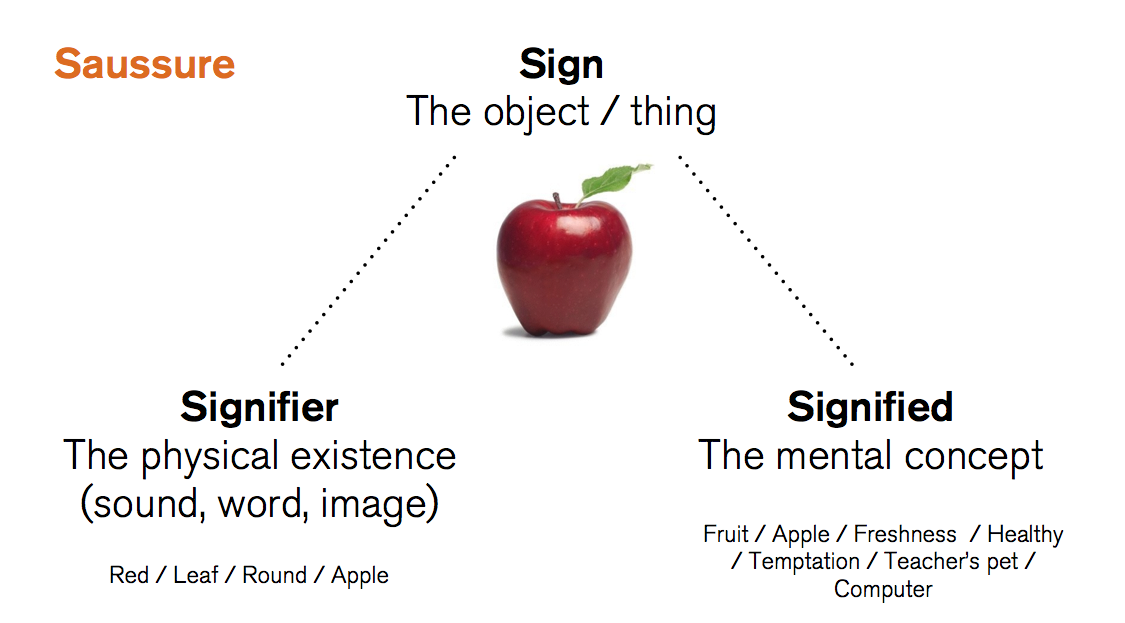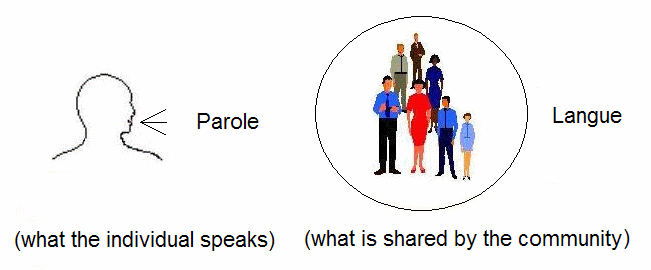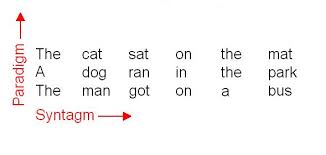European Structuralism
1. Fedinand de Saussure
1.2. Saussure's Dichotomies
Various theoretical dichotomies can be extracted from Saussure’s work. This has become a tradition. He made a clear distinction between several new concepts: signifier/signified langue/parole, synchronic/diachronic studies, and syntagmatic/paradigmatic studies.
1.2.1 Signifier/Signified
One of the concepts introduced by Saussure in his linguistic theory is the linguistic sign. He regards langue as a system of arbitrary signs. First, he defines the sign as a relationship between two equally participating characteristics: the signifié (signified) and the signifiant (signifier). The first refers to an idea or a concept, the second to a form or an acoustic image. The sign is a meaningful entity, and it is the basic unit of communication. Arbitrariness of the linguistic sign means that there is no inherent or inevitable link between the signifier and the signified: it is a matter of convention within a speech community.

1.2.2 Langue/Parole
Saussure distinguished between three main senses of language, and then he emphasized two of them. He sees that langage is composed of two aspects langue and parole. These terms have obtained a wide approval in modern linguistics, without any specific translations in European languages. Langage is the hereditary propensity of human speech present in all normal human beings. For its correct development, it needs the appropriate environmental prompts. It is a natural bequest distinguishing the human species. Langue refers to the abstract system shared by all the speakers of the same language, like English, Arabic, French, etc. It is an underlying system of abstract rules of lexicon, grammar and phonology which is implanted in each individual’s mind resulting from his nurture in a given speech community. Being peculiar to the speech community, langue is something which the individual can make use of but cannot influence by himself. It has a social nature according to Saussure. Parole refers to the real speech of the individual, an instance of the use of system. It is the concrete side of language. According to Saussure, it is langue that should be the primary concern of the linguist.

1.2.3 Synchronic/Dichronic
Contrary to the entirely historical view of language of the earlier hundred years, Saussure emphasised the value of seeing language from two dissimilar views, which he called synchronic and diachronic. A synchronic approach to language studies investigates the state of language at a particular phase of its development without allusion to its history. Saussure referred to this state as an état de langue. In order to study this, linguists will collect samples of language within a fixed period, describing them not considering any historical factor which might have influenced the state of language up to that time. The time factor is irrelevant. A diachronic approach, in contrast, is the study of the history of a language, focussing on language change in pronunciation, grammar or vocabulary. This approach deals with the never ending successions of language states. A diachronic study presupposes a synchronic study. Saussure emphasised that modern linguistics should be synchronic in perspective.

1.2.4 Syntagmatic/Paradigmatic
Syntagmatic relationships exist between items in a sequence. They are also called linear, co-occurrence, sequential or horizontal relations. By contrast, paradigmatic relationships hold between existing items and other items in the same language that can take the same position in the sequence: between actual elements and their substitutes. Taken together, all elements form a class, a system. These relationships are also called associative, substitution, vertical relationships. According to Saussure, language, then, has a two-dimensional structure.
